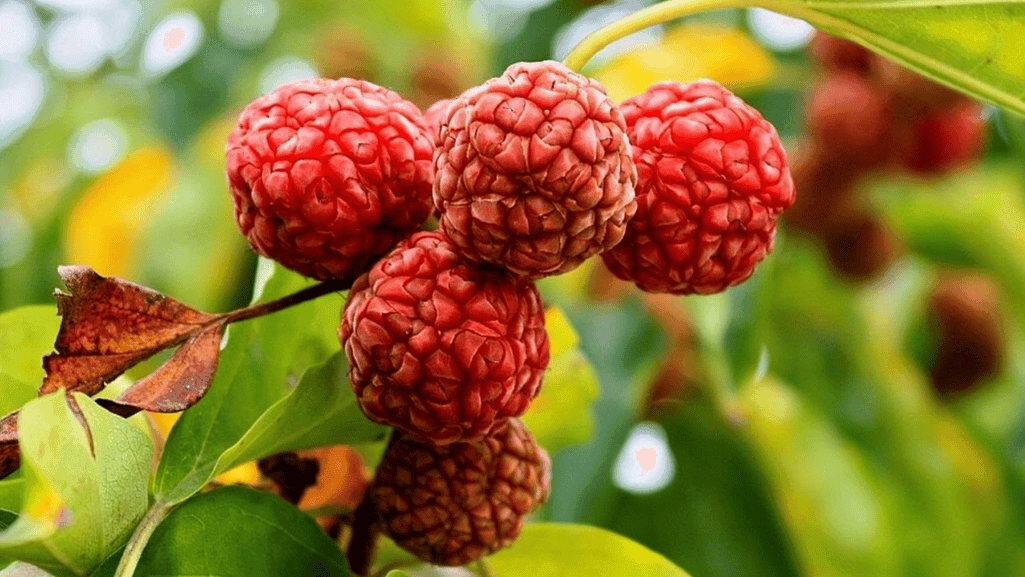
Beautiful flowers gardenia Plants For Your homes

Growing cold hardy fruit plants in chilly climates is rewarding. Commercial growers often plant in USDA Zone 5 and above. But, there are many winter hardy fruit trees and bushes for colder areas, like Zone 4.
Deciduous fruit trees need cold and then warmth to grow and produce fruit. The amount of cold and warmth needed varies by type. Choosing the right type for your area is key to growing fruit.
Some great cold hardy fruit trees include Gravenstein apples and Alderman plums. Sour cherry trees like Meteor and North Star also do well. European pear trees can grow in Zone 4 with the right care.
Knowing how much chill a fruit tree needs is key to growing them well. Chill hours are the time spent below a certain temperature during their dormant period. This helps them grow again in spring, ensuring they flower and fruit well.
As autumn brings cooler days, fruit trees go dormant. This protects them from winter’s cold. They stop growing, store energy, and lose their leaves. But, they need enough chill hours to wake up in spring.
Different trees need different chill hours. For example, apples need 500 to 1,000 hours. But, some like avocados and mangoes need none.
The Hours Below 45°F model is how we measure chill hours. It counts hours below 45°F during the dormant period. These hours add up, not needing to be all at once.
Chill hours are called “CU” and count hours between 32°F and 45°F. But, days over 60°F take away from these hours. So, warmer days can lower the chill hours.
Choosing the right fruit tree for your area is important. Trees need the right chill hours for your climate. Cool climates need trees needing more chill hours, while warm ones need less.
In mild climates, like southern California, trees needing less chill hours do well. Planting different trees helps with changing weather. This way, even if one tree doesn’t get enough chill, others might.
“Planting a variety of cultivars with a range of chilling requirements can offset odd years when there may be more or less chill hours than average.” – Fruit Tree Expert
Not enough chill hours can cause problems. Trees might not flower well, set fruit, or fruit at all. So, picking the right tree for your area is crucial for a good harvest. For more on frost tolerance and cold hardiness, check our guide.
By understanding chill hours and picking the right trees, your orchard can thrive. With the right care, you’ll enjoy a rich harvest of fresh fruit.
When picking cold hardy fruit trees for your garden in zone 4 or colder, choose ones that can handle the cold. You can find many options like apples, plums, cherries, and pears that grow well in these areas.
Apples are very tough and can grow in zone 4 and colder places. Many apple varieties can handle the coldest temperatures. This makes them great for growers in central Wisconsin and other cold spots. Some top apple varieties for these areas include:
Many European plum varieties don’t do well in cold climates. But, several American plum cultivars are perfect for zone 4. These trees add variety to your garden and give you delicious plums. Some top American plum cultivars include:
Sweet cherries are hard to grow in zone 4, but Rainier is one that works. Sour cherry varieties, however, are much better for the cold. They’re great for pies, jams, and other treats. Look for these sour cherry varieties:
Wild cherries and chokecherries are also common in colder areas like central Wisconsin.
Pears can be tough to grow in zone 4, but there are hardy European pears that can do well. When picking a pear tree for your zone 4 garden, consider these cultivars:
By picking the right cold hardy fruit trees for your zone 4 or colder climate, you can enjoy a wide variety of fruits. You’ll get apples, plums, cherries, and pears, even in the coldest places.
Berries and shrubs are great for growing fruit in cold areas. They can handle harsh winters and still give you tasty fruit. You can find many cold climate berries like low-chill blueberries, tart currants, and gooseberries.
Blueberries are loved by many, but some need a lot of chill hours. Luckily, low-chill blueberries can grow in milder winters. They need only 150-400 chill hours, making them good for more zones.
For your cold climate garden, pick ‘Northblue’, ‘Northcountry’, and ‘Northland’ blueberries. They’re hardy and give flavorful berries in cooler areas.
Cane berries like blackberries and raspberries are great for cold gardens. Some varieties need less chill hours, making them perfect for cooler areas. This means you can enjoy their sweet fruits even in colder places.
For raspberries, try ‘Boyne’, ‘Nova’, and ‘Nordic’. For blackberries, ‘Illini Hardy’, ‘Darrow’, and ‘Triple Crown’ are good choices. These are bred to grow well in cold and still taste great.
Currants and gooseberries are perfect for northern gardens. They need 800-1,200 chill hours but are great for jams and pies. Gooseberries have some low-chill varieties that need less chill hours.
For currants, choose ‘Red Lake’, ‘Cascade’, and ‘Consort’. For gooseberries, ‘Poorman’, ‘Oregon Champion’, and ‘Pixwell’ are good. These varieties are great for cold climates and offer a lot of fruit.
Choosing the right berries and shrubs for your garden means you can enjoy fresh fruit in cold areas. With low-chill blueberries, hardy cane berries, and tart currants and gooseberries, you have many options for your cold climate fruit garden.
To grow a thriving cold-weather orchard, you need to plan carefully. Choose the right plants for your area, find the best spots in your yard, and protect them from frost. This way, you can enjoy a harvest of tasty, cold-hardy fruits.
Choosing the right plants is key. Hardiness zones help you pick plants that will do well in your area. In zone 3, you can grow currants, gooseberries, and more.
Think about the chill hours needed by your plants. Chill hours are the cold hours needed for plants to grow fruit. Pick plants that match your area’s chill hours.
Hardiness zones have microclimates too. These areas have different climates due to elevation, water, and sunlight. Knowing these can help you place plants where they’ll do best.
For example, south-facing slopes can warm plants. Frost-sensitive plants near buildings can get heat protection. Elevation affects climate too. Understanding these can boost your orchard’s success.
Even with the right plants and spots, frost can still harm them. Frost protection is important. Here are some ways to protect your plants:
By using these methods, you can grow a cold-weather orchard that gives you delicious fruits for years.
Growing cold hardy fruit plants in chilly climates is possible for dedicated gardeners. By picking resilient fruit varieties for your area, you can have a thriving fruit garden. Apples, plums, sour cherries, and hardy European pears are great for zone 4 and colder areas. Low-chill blueberries, cane berries, currants, and gooseberries are also good for cool climates.
To make your chilly climate fruit gardening a success, find the best spots in your yard. Plant fruit trees and shrubs in sheltered areas like south-facing walls or near water. This protects them from harsh winds and temperature changes. Also, use frost protection like row covers or anti-transpirants to prevent cold damage.
With the right planning, selection, and care, you can have a fruitful harvest from your backyard. Whether you’re new or experienced in growing cold hardy fruit plants, facing extreme weather can be rewarding. As you care for your plants through the seasons, you’ll grow to appreciate their resilience and adaptability.
